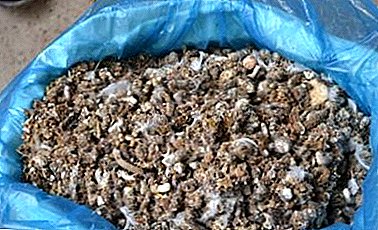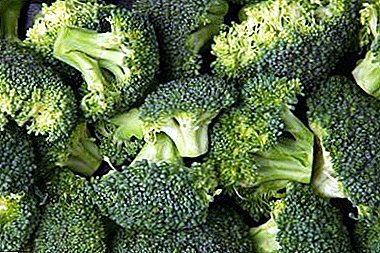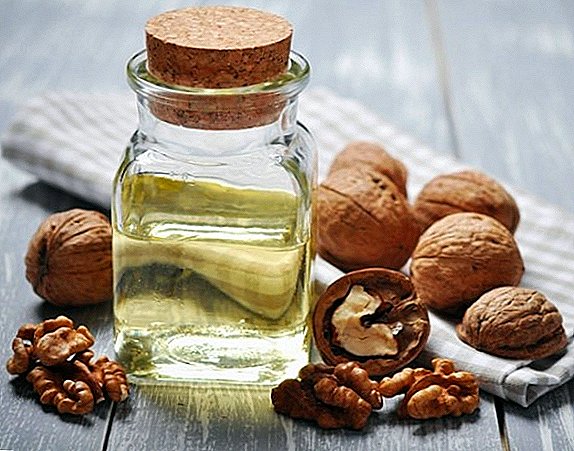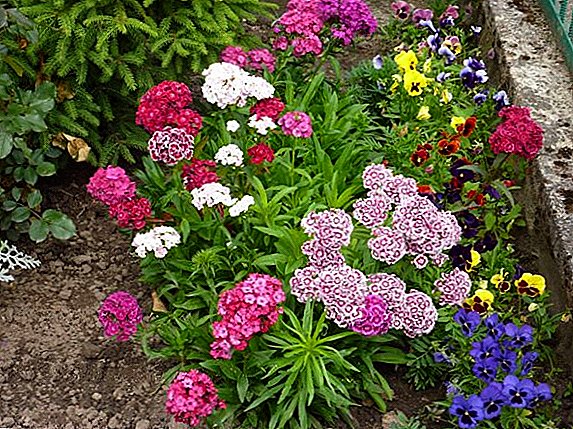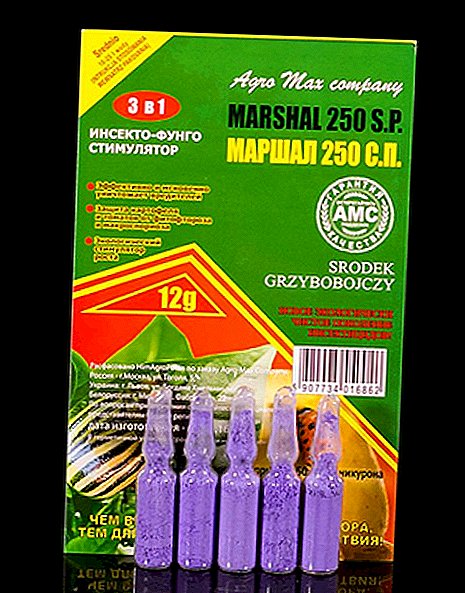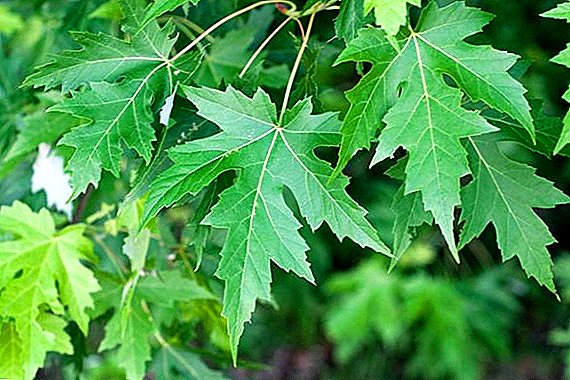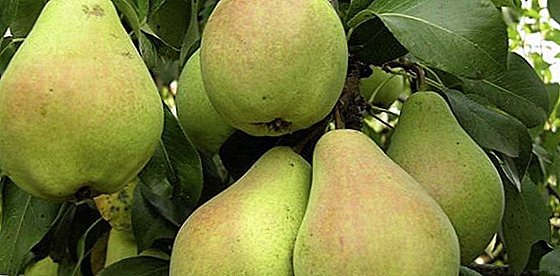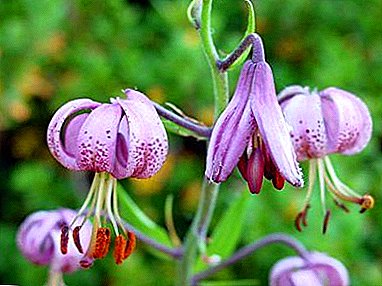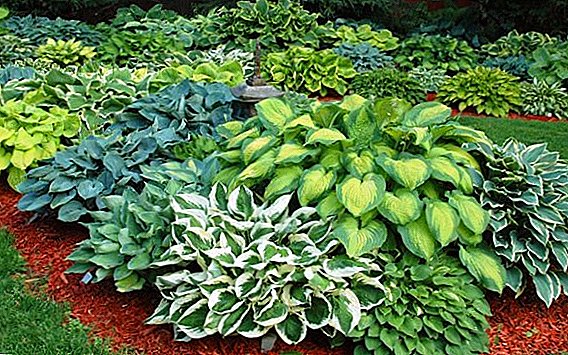 Hosta is a popular perennial plant. It has many varieties of various shapes and colors. There are about 40 species of plants. They are shade-tolerant, so loved by many gardeners.
Hosta is a popular perennial plant. It has many varieties of various shapes and colors. There are about 40 species of plants. They are shade-tolerant, so loved by many gardeners.
This article presents the hosts of different varieties with photos and descriptions.
White skinned
Artificially derived plant species, whose birthplace is Japan. Small in size, has broadly lanceolate leaves, dark green with white edging. Peduncles with a small number of small flowers, perianth lilac-purple with dark stripes.
The white-haired host starts blooming from mid-summer until the very autumn. It bears fruit. 
Swollen
Bract broadly heart-shaped, dark green, shiny at the base. It has a leafless flower with lilac flowers. Blooms in July. Another host variety swollen Aurea-Mculata blooms with purple inflorescences.
Important! The Aurea-Muculata variety has leaves that are very sensitive to large drops, but the bract isRain does not harm.Its leaves are slightly wavy, heart-shaped, with an uneven yellow color, divided into strips of different colors. Until the summer, it retains a bright color, and then becomes green under the influence of the sun.

Wavy
Artificially bred species in Japan. The bract is oblong-ovate, strongly wavy, in the center is white, or interspersed with areas of white and green. Flowers bell-shaped light purple color. Bloom in mid-summer.
Like the host, the Asparagus family includes iglitz, asparagus, and yucca.Hosta wavy has several varieties (Erromena, Undulata, Univiltata): one with green leaves and high peduncle, the other with white leaves and a narrow green stripe, and the third has a white middle with green edges.

Siebold
Bract wide-ovate, covered with a waxy bloom. The flowers are white or pale lilac.
Did you know? Ziebold's host is a polymorphic plant, which makes new interesting combinations appear during cross-pollination.The most common are ancient hybrids, bred in Japan. A variety of Aureomarginata with leaves that have a dark yellow rim became widespread, and by the middle of summer the saturation of the hue increases.
Another, Elegans, has wide, wrinkled, gray-blue leaves. The color of the flowers varies from pale purple to white. Herkules has a blue-green foliage, large in size.  Hybrids easily intersect, so that Siebold host is often used in breeding, you can get a lot of variable phenotypic traits.
Hybrids easily intersect, so that Siebold host is often used in breeding, you can get a lot of variable phenotypic traits.
Did you know? In China, the host has been actively used for hundreds of years to decorate picturesque shores and decorate pagodas. Foreigners are strictly forbidden to export this plant outside the Middle Kingdom.
Beautiful
Homeland are Asian countries. The plant has a small height, about 10-18 cm. The bracts are small, oval in shape. Peduncles have not many flowers of a pale lilac color. Blossom in July. Differs in rapid growth. 
Curly
In Europe, it is more common than in its homeland in Japan. Bred artificially in the gardens. The heart-ovate leaves are green with wavy edges and white border. In total in the inflorescence about 30-40 flowers of purple color.
It grows slowly, but forms thickets. Flowering begins in mid-summer and until autumn. 
Lanceolist
It has a bract with a dense plate of ovate-lanceolate form of green color and a red-brown spot at the base.
Flowers purple color with dark stripes. Hosta lanceolaceous blooms later than all other species: at the end of summer and until mid-autumn. 
Podorozhnikovaya
It grows in Japan and China. Plant with ovate-rounded, heart-shaped at the base, thin, bright green, shiny leaves. The flowers are large white, fragrant, the inflorescence is thick, short. It blooms in the middle of summer.
Check out the list of shade-tolerant perennials.Hosta plantain has several varieties. The only known variety that differs from the variety is Grandiflora. It has barren flowers and elongated leaves.
There are several other options (Honey Bells and Royal Standart), which are different from the type of earlier flowering and occasionally have a lilac shade of flowers. 
Polychis
The distribution zone is the islands in east Asia. Dense plants with vertically directed leaves, ovate-lanceolate, with a dense plate of dark green color. Leafy tsvetony with the drooping colors of purple color. It blooms all summer.
Important! Japanese researchers (Sugawara, 1937; Si-rasaka, 1936) note that young leaves and petioles host erythrocytes have healing properties against abscesses and tumors.Chonea has a yellow-white border and a bluish tint of flowers on the bract. A variety of Tall Boy has a high peduncle, planting is made either in one bush, or in the background flower beds.

Forchuna
Hybrid, artificially bred in Japan. In many respects it has similarities with Siebold host, but smaller. It has a heart-shaped bract with a slight wax bloom. Inflorescences have many flowers. Funnel purple flowers. It blooms in late summer.
It has several varieties that differ in color and size of the bract. For example: N. l. var. albo-marginata Voss. has a white border on the leaves, and Kabitan yellowish or white spots. 
Ovoid
Homeland is the Far East. The plant forms rounded bushes. Bract broadly ovate, green. Peduncles more than half a meter in height. Flowers are dark purple-blue, gathered in a raceme. It blooms in the middle of summer.
Variety var. aureo-variegata Voss. It has rough leaves with yellow stripes and blue-violet flowers. Two-colored, differs in dark green lanceolate bracts and longer flowering. The broadleaf species corresponds to its name and differs from the others by its broad, rounded leaves and lilac flowers.  Due to its diversity, the plant is a permanent decoration of flowerbeds and gardens throughout the world. The unpretentiousness of the hosts allows it to grow in any part of the world, and the tendency to cross-pollination and breeding interesting hybrids gives hope for the emergence of more and more new varieties of the beloved plant.
Due to its diversity, the plant is a permanent decoration of flowerbeds and gardens throughout the world. The unpretentiousness of the hosts allows it to grow in any part of the world, and the tendency to cross-pollination and breeding interesting hybrids gives hope for the emergence of more and more new varieties of the beloved plant.


